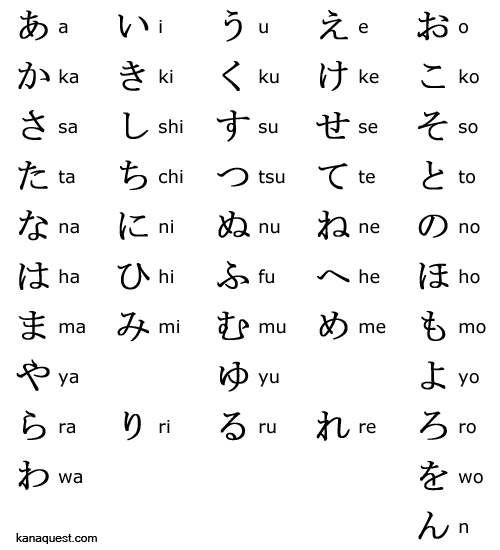Intro to Hiragana
Hiragana has multiple uses in Japanese. Hiragana is used as a step to learning kanji. It is also used for some words of Japanese origin that don't have kanji characters, such as です (de:su). Often kanji and hiragana are mixed to form one word, such as 凄い (sugo:i), a word for terrific, and 魚つり (sakana:tsu:ri), which means fishing.
The Hiragana alphabet contains 46 basic characters, each representing a sound, rather than a thing. The following chart shows the basic characters with their Romaji counterparts.

Aside from these characters, there are also characters that are similar to the ones above, but are altered with two small dashes or a small circle on the top-right of the characters. For example か (ka) with two dashes would be が (ga). And aside from all of these, there are also characters that are smaller versions of normal characters that alter the way the character before or after them sounds. For example, みゅ (myu). For a complete chart of Hiragana characters, and for more information on Hiragana, you should visit the Hiragana article on Wikipedia.
To practice and memorize hiragana, you should try out the hiragana quiz found on this website.